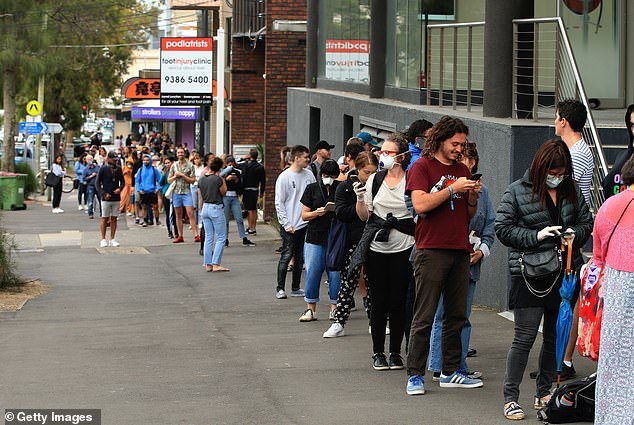Unemployment dips again this week with another 30,000 people back to work as Australia’s economy roars to life while the world splutters
- Labor force report will show jobless rate down to 6.3 per cent from 6.4 per cent
- Down from 7.5 per cent last July during the depths of the pandemic recession
- But still a ways to go to get back to pre-coronavirus 5.1 per cent a year ago
Economists are expecting more good news on the jobs market this week with a further decline in the unemployment rate.
But it will remain way above what is deemed to be full employment and far from a level to satisfy the Reserve Bank.
Economists expect Thursday’s labour force report for February will show another 30,000 people joined the workforce in the month, bringing the jobless rate down to 6.3 per cent from 6.4 per cent in January.
This compares with the spike to 7.5 per cent last July during the depths of the recession and a pre-pandemic rate of 5.1 per cent a year ago.
Economists are expecting more good news on the jobs market this week with a further decline in the unemployment rate
Addressing a conference last week, Reserve Bank governor Philip Lowe said strong job advertising and vacancies suggest unemployment will continue to trend lower.
However, he warned this trend could be temporarily interrupted when the JobKeeper wage subsidy ends this month.
Commonwealth Bank economists expect the winding back of JobKeeper could see 100,000 people lose their job.
ANZ economists expect the rate of improvement in unemployment will be more gradual from here, reaching 5.8 per cent by the end of 2021 and five per cent by the end of 2022.
Dr Lowe said the unemployment rate needed to be below five per cent to drive wages growth, and in turn inflation.
He said it was certainly possible that full-employment would now mean a jobless rate in the low 4s and was not inconceivable that a rate starting with three was sustainable.
Unemployment briefly hit four per cent twice in 2008 just before the global financial crisis erupted.
Dr Lowe reiterated the central bank intends to keep the cash rate at a record low 0.1 per cent until inflation is sustainably back in the two to three per cent target range, something he doesn’t expect to occur until 2024.

Economists expect Thursday’s labour force report for February will show another 30,000 people joined the workforce in the month, bringing the jobless rate down to 6.3 per cent from 6.4 per cent in January
He may return to these topics when he opens the Melbourne Business Analytics Conference on Monday.
His colleague, assistant governor for financial markets Christopher Kent, will address an Australian Finance Industry Association forum on Wednesday.
The central bank will also release the minutes of its March 2 board meeting on Tuesday and when the Australian Bureau of Statistics will issue weekly payroll jobs figures and capital city house prices for the December quarter.
Meanwhile, Australian shares look set for a soft opening on Monday after Wall Street finished mixed with tech stocks suffering a renewed hit.
The local market had posted its best week in over a month on Friday with the S&P/ASX200 index having finished 0.8 per cent up at 6766.8.
However, Australia share futures subsequently eased three points to 6767.
On Wall Street, the Dow Jones Industrial Index did strike its fifth consecutive record high as investors bought shares in anticipation of a strong recovery in the US economy.
The Dow rose 0.9 per cent to 32,778.64 and the S&P 500 gained 0.1 per cent to 3,943.34, but the Nasdaq Composite dropped 0.6 per cent to end at 13,319.87.
